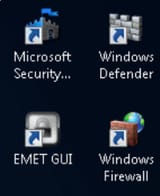Anonymous
9/13/2025, 5:44:04 AM
No.106571249
>>106571281
>>106571346
>>106571551
>>106571629
>>106572661
>>106572750
windows 7 in 2025
Here’s a realistic “maximum safe setup” for running Windows 7 online in 2025:
---
1. Install Windows 7 Properly
Use the latest Windows 7 Service Pack (SP1).
Install only the editions you need (Home vs. Pro) to reduce unnecessary services.
2. Disable Vulnerable Services
File and printer sharing OFF
Remote Desktop (RDP) OFF
SMBv1 DISABLE (old and highly vulnerable)
NetBIOS over TCP/IP OFF
Disable any unneeded network services: Telnet, FTP, etc.
3. Apply Third-Party Security
Malwarebytes Premium real-time protection
TinyWall or other firewall block all unsolicited inbound/outbound traffic by default
Optional: HitmanPro.Alert for exploit protection
4. Use a Modern Browser (Offline Installer)
Firefox ESR or Chrome, latest version that still supports Win7
Enable automatic updates if possible, but check manually since OS is offline from updates
5. User Account Hardening
Never use Admin by default use a standard user account for daily use
Strong, unique passwords for accounts
Avoid auto-login features
6. Network Hardening
Put the PC behind a NAT router
Use Wi-Fi with WPA3/WPA2
Consider network segmentation: isolate the Win7 PC from your main network if possible
7. Backup & Recovery
Regular disk images (so you can restore quickly if infected)
External drive or cloud backup for important files
8. Caution With USB & Downloads
Scan any USB or downloaded file with Malwarebytes before opening
Disable auto-run for drives
9. Optional: Virtualization
Run Windows 7 in a VM on a modern OS if possible easiest way to contain infections
---
With this setup, a Windows 7 machine can be reasonably safe for casual browsing or testing, but it will never be as secure as a modern OS. Basically, you’re buying time and containment, not invulnerability.
If you want, I can draw a diagram of how the network and firewall setup would look for maximum safety — makes it easier to visualize.
Is chargpt correct?
---
1. Install Windows 7 Properly
Use the latest Windows 7 Service Pack (SP1).
Install only the editions you need (Home vs. Pro) to reduce unnecessary services.
2. Disable Vulnerable Services
File and printer sharing OFF
Remote Desktop (RDP) OFF
SMBv1 DISABLE (old and highly vulnerable)
NetBIOS over TCP/IP OFF
Disable any unneeded network services: Telnet, FTP, etc.
3. Apply Third-Party Security
Malwarebytes Premium real-time protection
TinyWall or other firewall block all unsolicited inbound/outbound traffic by default
Optional: HitmanPro.Alert for exploit protection
4. Use a Modern Browser (Offline Installer)
Firefox ESR or Chrome, latest version that still supports Win7
Enable automatic updates if possible, but check manually since OS is offline from updates
5. User Account Hardening
Never use Admin by default use a standard user account for daily use
Strong, unique passwords for accounts
Avoid auto-login features
6. Network Hardening
Put the PC behind a NAT router
Use Wi-Fi with WPA3/WPA2
Consider network segmentation: isolate the Win7 PC from your main network if possible
7. Backup & Recovery
Regular disk images (so you can restore quickly if infected)
External drive or cloud backup for important files
8. Caution With USB & Downloads
Scan any USB or downloaded file with Malwarebytes before opening
Disable auto-run for drives
9. Optional: Virtualization
Run Windows 7 in a VM on a modern OS if possible easiest way to contain infections
---
With this setup, a Windows 7 machine can be reasonably safe for casual browsing or testing, but it will never be as secure as a modern OS. Basically, you’re buying time and containment, not invulnerability.
If you want, I can draw a diagram of how the network and firewall setup would look for maximum safety — makes it easier to visualize.
Is chargpt correct?




